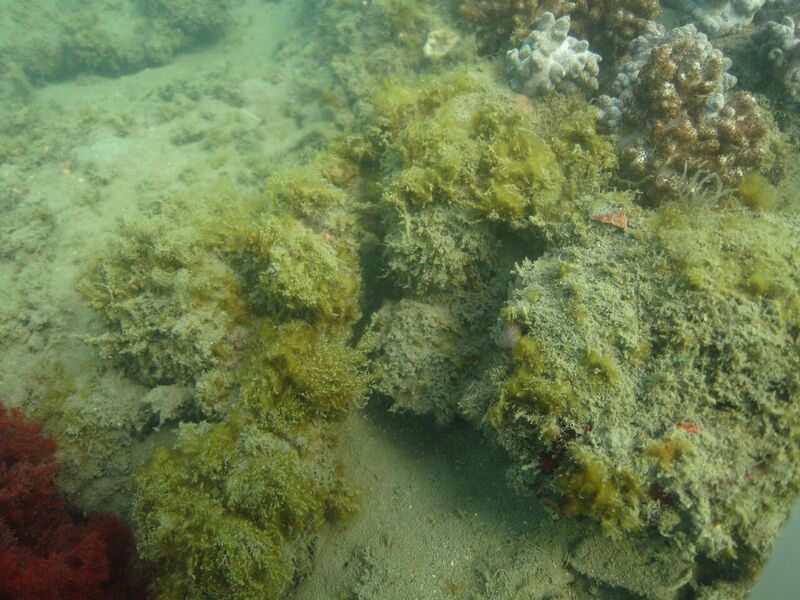|
|
Subtidal turf algaeShort descriptionSubtidal turf algae growing as a dense mat or ‘turf’. Disclaimer: Ecosystem type descriptions are based on biophysical attributes identified in Central Queensland through expert advice and supported by scientific literature. Not all ecosystem types are mapped based on current inventory, and many of the ecosystems described here may also occur in other parts of Queensland.
Classification categoriesSelect from the links below to view related ecosystem type categories Long descriptionSubtidal turf algae growing as a dense mat or ‘turf’ on either consolidated or unconsolidated substrate[4]. Algal turfs are usually less than 10 millimetres in height, and can be assemblages of many species of minute algae, often in association with unconsolidated substrates such as muds and sands. Algal turfs often persist because constant grazing by herbivores prevents overgrowth by macrophytic algae. Common species on inshore reefs are from the genera Lyngbya, Acetabularia, Cladophora and Sphacelaria, with a different suite of species dominating offshore reefs[2]. Algal turfs are common in the shallow subtidal area close to the shoreline and less than 5 metres below the sea surface. They are often in a band above that occupied by zoanthids and ascidians, soft corals (i.e. octocorallians*) and hard corals (in bands of descending depth). Associated fauna include low density zoanthids and ascidians as well as soft corals (e.g. octocorallians from the genera Cladiella, Klyxum)[5]. Turf algal ecosystems may also occur on unconsolidated substrate where they may be a minor component of seagrass ecosystems. Usually found in low energy environments, although they may occur as a minor component on the lee of high energy rocky shores where areas are subject to sand scour. Herbivorous biota play a significant role in encouraging or discouraging algal growth on coral reefs, depending on the intensity of grazing and preferred food. Farming damselfish defend their territories from other foraging fish, halting the algal succession at the turf algae stage on a coral reef substrate[1]. *Octocorallia is a subclass of the class Anthozoa in the phylum Cnidaria, and include soft corals, gorgonians, sea whips, sea pens, sea fans and octocorals. Like some of the many other anthozoans, octocorallians are sessile polyp-bearing animals with a mobile larval phase. Octocorallians are distinguished by the eight (i.e. octo) tentacles in each polyp. Most octocorallians do not deposit a rigid calcium carbonate exoskeleton, and therefore tend to attach to reefs rather than contribute to reefal frameworks as per the reef building Scleractinian (hard) corals[3]. Special valuesAlgal turfs often coexist with coral communities. Diagnostic attributesInundation 'Subtidal' Structural macrobiota 'Algae - turf' QualifiersAlthough unmapped, Period and Trend qualifiers are relevant as turf algae is variable in extent over time. DistributionTurf algae ecosystems are found throughout Queensland waters. The following relates to distribution of this ecosystem type within the Central Queensland mapping area:
CommentsLikely to expand in extent on inventory of other shallow consolidated ecosystems. Additional InformationSaltmarshes, seagrasses and algae - Department of Agriculture and Fisheries References
Last updated: 22 July 2019 This page should be cited as: Department of Environment, Science and Innovation, Queensland (2019) Subtidal turf algae, WetlandInfo website, accessed 25 June 2024. Available at: https://wetlandinfo.des.qld.gov.au/wetlands/ecology/aquatic-ecosystems-natural/estuarine-marine/descriptions/59/ |

 — Department of Environment, Science and Innovation
— Department of Environment, Science and Innovation


